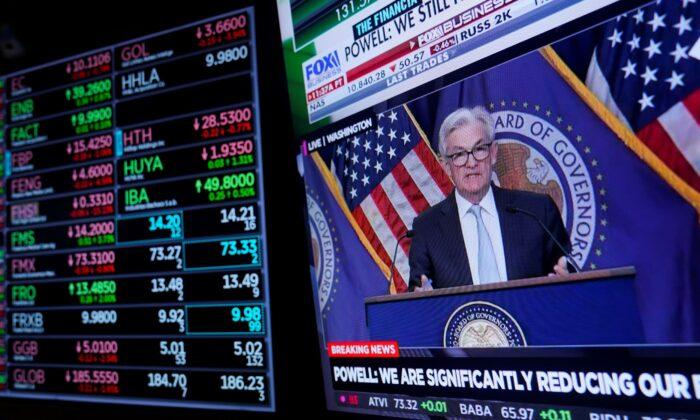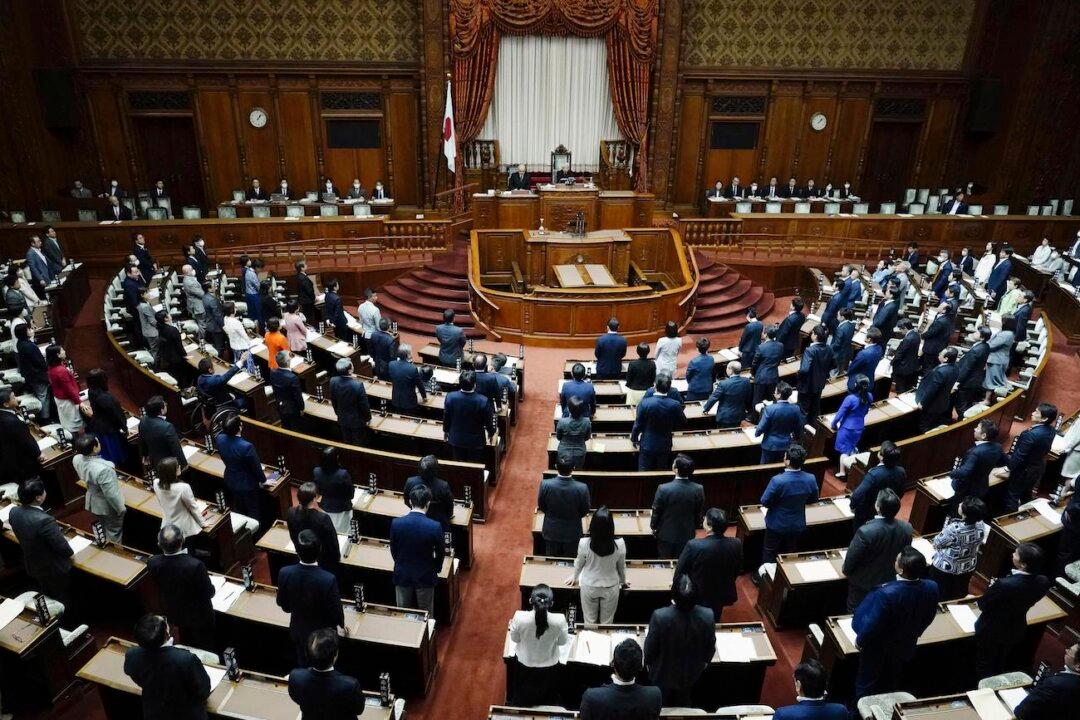Wall Street is heading lower ahead of Thursday’s opening bell after the Federal Reserve added another jumbo rate increase and suggested that the pace of rate hikes may slow, but the fight against inflation is far from over.
Futures for Wall Street’s benchmark S&P 500 index fell 0.8 percent and futures for the Dow Jones industrials retreated 0.6 percent.
Moderna tumbled 11 percent after saying Thursday that sales from advance purchase agreements for delivery of its vaccine this year will be $18 to $19 billion, as much as $3 billion lower than it projected just three months ago due to supply constraints.
Etsy rose more nearly 10 percent in premarket after beating third-quarter sales forecasts, while eBay jumped more than 6 percent after it reported strong results.
The Fed on Wednesday raised its short-term lending rate by 0.75 percentage points, three times its usual margin, for a fourth time this year. Its key rate now stands in a range of 3.75 percent to 4 percent, the highest in 15 years.
Fed Chair Jerome Powell reinforced expectations of more rate hikes by saying “we have a ways to go.” He indicated the level that would be high enough to bring down inflation appears to be higher than it did in September, but gave no target.
The Fed and central banks in Europe and Asia have raised rates aggressively this year to stop inflation that is running at multi-decade highs. Investors worry that might tip the global economy into recession.
On Thursday, the Bank of England announced its biggest interest rate increase in three decades. The increase is the Bank of England’s eighth in a row and the biggest since 1992.
U.S. consumer prices rose 6.2 percent year-over-year earlier in September, the same as the previous month. Core inflation, which excludes volatile food and energy prices to make the trend clearer, accelerated to 5.1 percent from August’s 4.9 percent.
Early Thursday, the yield on the two-year Treasury, an indicator of market expectations of Fed action, rose to 4.71 percent from 4.55 percent before the Fed statement. The yield on the 10-year Treasury, used to set mortgage rates, climbed to 4.19 percent from 3.98 percent.
Investors hope signs housing sales and other activity are weakening might encourage Fed officials to ease rate hike plans. But the latest data, especially on hiring, are relatively strong, a sign the Fed might stay aggressive.
All eyes will be on the Labor Department’s October jobs report coming on Friday. In September, American employers slowed their hiring but still added 263,000 jobs and the unemployment rate fell from 3.7 percent to 3.5 percent, matching a half-century low. Fed officials have signaled that the unemployment rate needs to be at least 4 percent to slow inflation.
The government’s report on weekly unemployment benefit applications comes later Thursday.
“Recession risks are rising, but that is the price the Fed is prepared to pay to get inflation under control,” said James Knightley, Padhraic Garvey, and Chris Turner of ING in a report.
In midday trading, the FTSE 100 in London lost 0.7 percent, the DAX in Frankfurt declined 1 percent and the CAC 40 in Paris sank 0.7 percent.
In Asia, the Hang Seng in Hong Kong fell 3.1 percent to 15,369.72, giving up much of the previous day’s gains.
The Shanghai Composite Index fell 0.2 percent to 2,997.80 and Sydney’s S&P-ASX 200 sank 1.8 percent to 6,857.90.
Japanese markets were closed for a holiday.
Kospi in Seoul rose 0.3 percent to 2,329.17. India’s Sensex lost 0.4 percent to 60,692.09. New Zealand and most Southeast Asian markets also fell.
In energy markets, benchmark U.S. crude lost $1.40 to $88.60 per barrel in electronic trading on the New York Mercantile Exchange. The contract rose $1.63 to $90 on Wednesday. Brent crude, the price basis for international oil trading, shed $1.29 to $94.87 per barrel in London. It rose $1.51 the previous session to $96.16 a barrel.
The dollar gained to 148.29 yen from Wednesday’s 146.94 yen. The euro declined to 97.38 cents from 98.83 cents.
On Wednesday, the S&P 500 tumbled 2.5 percent, the Dow lost 1.5 percent and the Nasdaq composite slid 3.4 percent.
Tech stocks, retailers, and health care companies were among the biggest declines.





